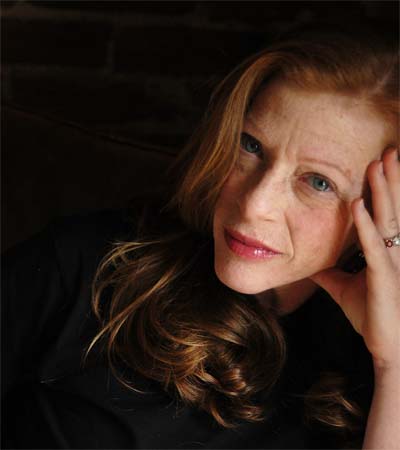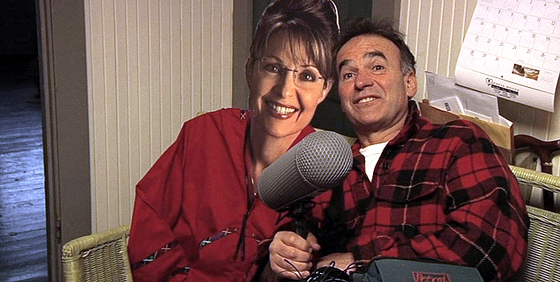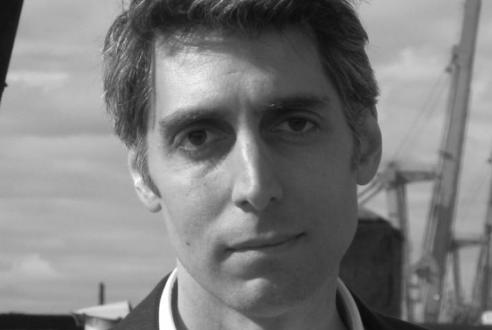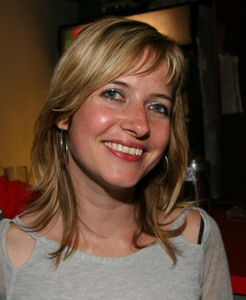Susan Orlean appeared on The Bat Segundo Show #415. She is most recently the author of Rin Tin Tin: The Life and the Legend.
Listen: Play in new window | Download
Condition of Mr. Segundo: Pondering an alternative timeline with the golden retriever rising as the heroic dog of choice.
Author: Susan Orlean
Subjects Discussed: Rin Tin Tin references in Finnegans Wake, Rinty’s indefinable charm, Jack London, dogs in World War I, the state of marketing in different time periods, flawed people and dog heroes in early animal films, soldiers reading poetry, mass cultural mediums and heroic animal images, emotional connections with animals, Burt Leonard’s desperate efforts to revive Rin Tin Tin, Paul Klein impersonating Lee Aaker at conventions, Rin Tin Tin as the blank slate for the American obsession, Strongheart, Rinty’s durability as an American icon, devotion to dogs, a tense 1955 photo shoot with Lassie and Rin Tin Tin appearing on the cover of TV Guide, fierce competition between Lassie and Rin Tin Tin, having “bitten exclusively” written into a contract, Daphne Hereford and Rinty’s obsessive defenders, sinking one’s savings into battling intellectual property law, the perils and nature of giving into passion, knowing Lee Duncan through records, going through a dead man’s ATM slips, respect and “intimate eavesdropping” into subjects, occupational hazards in quirky journalism, cultivating trust with subjects, the bigness of passion, avoiding Rin Tin Tin overload, the rising population of German Shepherds in the 20th century, whether Rinty was bad in any way for history, the rise of fascism, and contrary images that meet on the battlefield.
EXCERPT FROM SHOW:
Correspondent: I wanted to start off with something unusual. I had found this accidentally. Because I started to read Finnegans Wake a month ago. I’m now on Page 20. But on Page 12, I was very happy to find this. There is this passage: “She knows her knight’s duty while Luntum sleeps. Did ye save any tin? says he.” Now this comes after Joyce has laid down all sorts of Germanic references. And of course, While London Sleeps? Rin Tin Tin film.
Orlean: Right.
Correspondent: So this seems as good a pretext as any to ask, well, if Rin Tin Tin got the approval of James Joyce, what accounts for his appeal? What accounts for his enduring popularity? What is the ultimate quality of Mr. Rinty here?
Orlean: You know, I think, in a way, that you can’t quite answer that is the answer. There’s a kind of charisma that certainly the first Rin Tin Tin had, but also this symbol of a dog, which is a dog who is brave and true and loyal and heroic. That resonates with people. He embodied it — especially the first Rin Tin Tin — so well that I think it touched something that was already there. The desire to have a superhero who was credible and not some comic book figure, but actually something real.
Correspondent: Krypto before Krypto.
Orlean: Yeah.
Correspondent: A superdog to match a superman.
Orlean: Exactly. I also think that, if you could say what it is that makes something endure, you’ve ruined it in a way. That there is something mysterious and wonderful about something that connects something with so many people and that lasts for so long, that shouldn’t be something you could put in words. I think that it defines itself by being something emotional that you feel and that you respond to. That can’t quite be described.
Correspondent: Well, I want to point out something you mentioned in the book. You point out that in the 19th century, dogs had only been recently domesticated. They were considered to have deep feelings. They were capable of expressing their emotions more than humans. Now I should point out that Jack London’s The Call of the Wild and White Fang — well, this was only fifteen years before the Rin Tin Tin film. I’m wondering. How did World War I, I suppose, tilt this fixation from dogs as emotional beings to this heroic quality that we’re talking about? Was hero worship the next inevitable stage in the evolution of this man-dog perception situation?
Orlean: Well, for one thing, there were so many dogs in the war. People in World War I saw dogs performing heroically. When you think of a battlefield and dogs being brave and being companionable and working hard, which they did, and maybe not showing as much fear as a soldier might — because dogs don’t have the apprehension of death or the worry of mortality the way people do. So they have the chance to be brave in a way people can’t. So there’s no question that seeing dogs and being alongside dogs in the war had a very huge impact on their perception. I mean, there were tens of thousands of dogs in World War I. So I imagine this entire generation of soldiers coming back, filled with awe. It was also a time where dogs were working not as our servants — the way they might have on a farm or a ranch, but as equals pretty much. I mean, dogs were in the trenches with soldiers. So the feeling that they were our partners almost more than our possessions arose during that time.
Correspondent: Well, you mention this move toward the cities.
Orlean: Right.
Correspondent: That’s still ongoing even in our time. It’s interesting to me that we went from dogs being perceived as “Well, let’s figure out when they’re domesticated, when they come from the wild, and vice versa.” Those two Jack London novels. And then you have this situation when suddenly they’re fighting wars with us.
Orlean: Right.
Correspondent: I’m wondering what it is about that turns a dog into a hero as opposed to some emotional being or tapping into some sort of primordial instinct or what not. Do you think that the original folks — Lee Duncan and company — sort of knew that they had to push the dog thing further?
Orlean: I think what Lee did was totally instinctual. I don’t think he was somebody who did a lot of strategizing and projecting forward what would be good. And, in fact, I think that’s part of what’s so touching about him. He seemed to be somebody who was really responding entirely out of this feeling of “I have this wonderful dog and I want you to appreciate how wonderful he is” rather than “Hmmm, I can make some money off of this if we write scripts that make him such and so.” Remember too that people consumed entertainment in an entirely different way in the ’20s. It wasn’t the juggernaut that it is today. You come up with a good character. You can then merchandise it and turn it into a multi-platform marketing device. It wasn’t like that. I think it was a simpler thing. How the idea of the heroic character evolved? Well, first of all, animals very often appeared in early literature as having heroic qualities that were selfless. I think selflessness is something that an animal can have more easily than a person.
Correspondent: Or it’s easier to understand altruism when it’s placed within an animal as opposed to a man.
Orlean: Exactly. And I think that it may seem a little funny to us now. But when you look at an animal doing something heroic, you don’t project a million things onto it. You don’t think “Oooh, he reminds me of my Uncle Milton who I didn’t like that much” or “I’m sick of this type of person always being the hero” or “She isn’t my race or gender or color” or whatever. A dog is something else. So you can look at it and admire it and maybe be in awe of it without bringing a lot of your own baggage to it. It’s not a person. You don’t look at it with the critical eye that you might look at a person with. So there’s a way that it’s easier to be thrilled by them and not have that reserve of thinking, “Oh, I don’t know.” I mean, it’s funny in those films. The early Rin Tin Tin films. The people are all so flawed. Each one of them has some terrible character flaw. Even the heroes among the humans have some — they’re either naive or they’re — they all fail. And whether that’s some aftermath of the war, in which people saw what terrible things people could do to each other. That feeling that human beings were deeply flawed. Maybe that’s what made a dog a hero that could be admired more freely and with less reservation.
The Bat Segundo Show #415: Susan Orlean (Download MP3)




